
15 minute read
Growing Benefits of Water Submetering
CCommunity owners and managers often ask the question, “Should we submeter our water services to the homes?” There has always been a great financial case to do so, and with new advancements in wireless communications and data analytics, the question has become: “How fast can we get our park submetered?”
A clear benefit to community owners is to subdivide the increasingly large utility bill from their local water utility and distribute these costs to the people consuming the water. The return on investment here is generally less than one year, immediately improving the owner’s cash flow and increasing property value.
Technological advancements in meters and their reading systems now allow owners to: • Pass on greater water costs due to improved accuracy of the meters. • Improve customer service to their residents by automatically alerting them to wasteful water usage, empowering reduced consumption and cost savings. • Identify leaks in individual homes - notifying homeowners the day the leak is detected, allowing a further reduction in the resident’s individual bill. • Identify large and very costly leaks in the park’s piping infrastructure, that, when fixed can drastically reduce the park’s utility bill and improve the value of the property. » by Matt Laird
In our experience, it is common for the community’s overall water usage to decrease 25-30% after the installation of submeters. Primary contributors to reduced water consumption are the identification of leaks in homes and in the park’s infrastructure, plus the conservation efforts of the residents and homeowners who are now directly responsible for individual water usage and cost.
Conservation Results from Accountability
The conservation efforts go beyond the savings alone. Let’s start with the normal billing profile of a park immediately following the installation of meters at homes where the typical water use is 2,000 to 4,000 gallons per month, though a small percentage will use as much as 10,000 to 20,000 gallons per month.
In general, the homes using much more water respond to their first individual water bill by immediately fixing a leaking faucet. Other good examples of home water leak fixes are repairing the toilet that’s been left running, or disallowing the open water hose to run down the gutter when a car is being washed.
Educate MHC SAVE THE DATE sept 2-4, 2020 N etworking Roundtable nashville , tn

ReGIsteR NOW educateMhc.coM
In-Home Leak Detection, Quantification, Automated Alerts
The main benefit of leak detection, enhanced data, and usage alerts goes to the residents. However, the goodwill community owners get also is very valuable. The newest meter reading systems provide not only the total water used but also measure the actual flow rate at all times during the day.
In looking at the water consumption for a particular home, it is noticed that two gallons of water is used every five minutes from 1 to 4 a.m. This is a time that we would expect no water usage, so there is a very probably a leak of about 0.4 gallons per minute. Although it is a minimal flow rate, that continuous leak for 1,440 minutes per day and 30 days per month, uses nearly 20,000 gallons of water per month. Depending on the area of the country, the leak will cost the homeowner $100 to $250 per month. New water metering systems automatically email the park owners of conditions, allowing them to alert the resident or homeowner to stop or repair the leak that day. Otherwise, that homeowner is likely to find out about the leak when they receive a massive bill at the end of the month.
Nearly everyone has heard the sound of a running toilet, then you jiggle the handle, and it is quieted for the time being. The problem reoccurs anytime the toilet is flushed again with an enormous amount of water wasted!
New system analytics recognize the pattern of a flapper leak and notify the park owner via email so the problem can be fixed.
Irrigation Waste
Another major water waster that faces park owners is irrigation, or more precisely, over-irrigation. Misprogrammed sprinkler controllers have been identified as major water wasters. Water is used at such a high flow rate in sprinkler systems that it takes little time for a major bill to pile up. It can be a substantial amount, increasing the bill from 3,000 gallons per month to more than 20,000 gallons per month. MHV
Matt Laird, CEO of Metron-Farnier, and its subsidiary companies, Metron Sustainable Services and Transparent Technologies, has 30 years’ experience in water metering. He holds a B.S. in Aerospace Engineering and a M.B.A. in Finance, both from the University of Colorado. Mr. Laird has been a member of the AWWA serving on the National Water Committee for 15 years.

Market Knowledge & Execution.
TRANSACTION
SERVICES
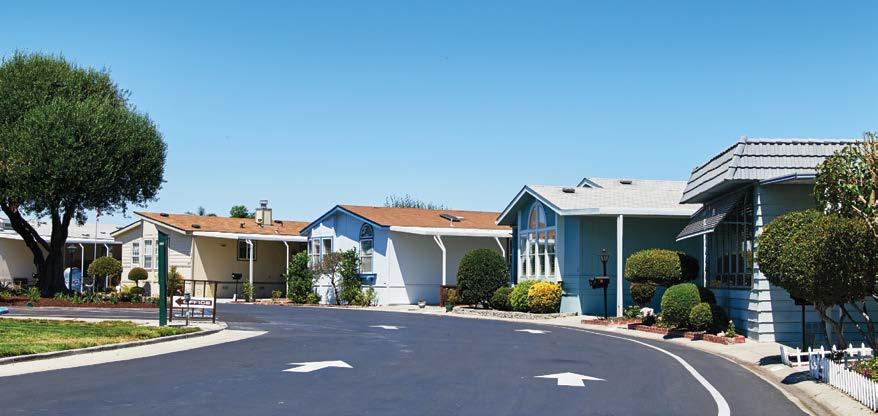
VALUATION
SERVICES
DEBT & EQUITY
SERVICES
MICHAEL J. NISSLEY
BRUCE NELL, MAI AI-GRS, MRICS
Executive Managing Director National Practices Valuation Advisory Group +1 614 436 9800 bruce.nell@colliers.com
KARI PAREKH
Director | Capital Markets Manufactured Housing & RV Group +1 904 207 3696 kari.parekh@colliers.com
OUR EXTENSIVE ADVISORY SERVICES INCLUDE:
Mobile Home Communities & RV Resorts Valuation & Advisory Services Debt & Equity Finance Capital Markets & Investment Sales Acquisitions & Dispositions International - Canada, Europe, Australia Distressed Assets
Local
Expertise,
Global Reach.
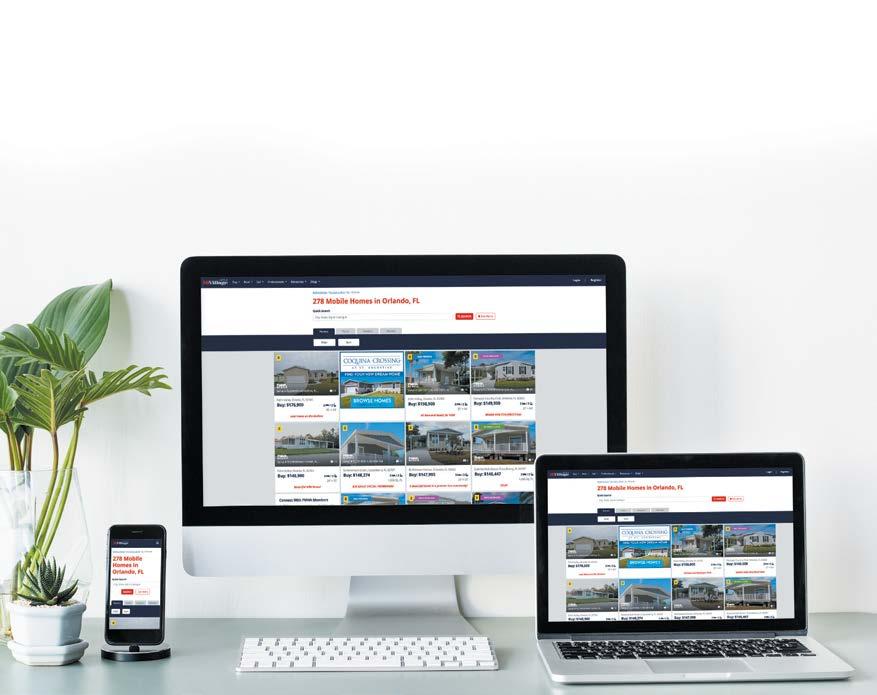
MHVillage.com Has a Fresh, New Look
If you’re not on MHVillage.com, the most active website for manufactured housing, you’re simply missing out.
With our size and focus, MHVillage gives you unequaled reach that just got even better. We’ve redesigned MHVillage.com from the ground up for faster load times, lead optimization, and a better overall home shopping experience. Everything from search results to the information presented in listings is better organized and highlights the content consumers care about the most.
Already a client?
Contact us for a complimentary marketing review of your account.
More Traffic. More Leads. More Sales
A Planner’s Perspective
2020 Development Trends for Manufactured Home Communities
by Donald Westphal
Owners and operators of manufactured home communities are seeing interesting developments in three areas of the business. • New Greenfield Projects • Community Expansions • Older Community Upgrades
Greenfield Projects
The need for new communities is great in most parts of the country. After years of vacancies in communities, most desirable existing communities are at or near capacity, resulting in an increasing demand for new projects. Unfortunately, zoning new sites is difficult. Sewer and water availability in desirable locations where zoning is attainable is rare. Many available zoned sites are in undesirable or
Photo courtesy of Tharakan Consulting
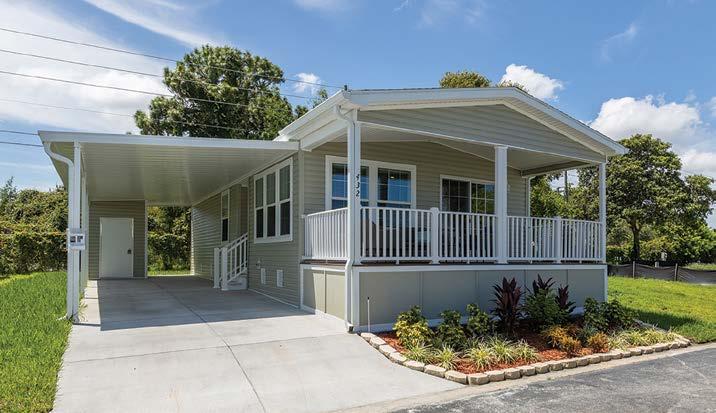
difficult locations. And public opposition to new communities continues to come from the “trailer park” perception.
Construction costs are rising, but so is the value of the finished project. As a result, it is important to take advantage of unique ways development costs can be minimized by using knowledgeable manufactured housing community planners and engineers.
Community Expansions
It is often easier to expand an existing community than to start anew. Zoning in many cases is less difficult since it is an expansion of an existing use. And hopefully, the existing community is well managed and cared for and will generate minimal opposition. If not, it is important to bring it up to respectability before seeking approval to expand. The expansion also can provide an opportunity for existing »
residents to upgrade to a new home in the expansion area, allowing for the removal of less attractive older homes. New home sales in the expanded community provide an additional profit center for the owner. Additional utility services may be available from the local supplier or attainable through the expansion of the existing on-site facility. The addition of new sites to the existing community may not require a significant increase in overhead, another benefit to expansion. Care should be exercised to the disruption of existing residents caused by construction activities. Also, some upgrade in the community amenities is advisable to minimize resident concerns.
Community Upgrades
Upgrading an existing community is a win-win for the owner, the residents, and the industry. The community already is properly zoned and in a great location. Making the community more attractive and livable should be welcomed by residents and neighbors alike. On the negative side, some communities have rezoned undesirable properties making the addition of newer homes difficult. However, many of our more progressive state associations have tackled this

matter and made the practice unlawful. Often municipalities require reconfiguration of home-sites to conform to the existing regulations regarding setbacks and lot sizes. Fortunately, many states allow for lot reconfigurations to reflect the rules that were in effect when the community was originally constructed. Michigan and Indiana are two states with that advantage. Many times, residents become concerned about their future. However, if the owner has the foresight to get its image in order first — entrance upgrades, street improvements, refreshed structure appearance, and landscaping — it can stimulate residents to upgrade their home and home-site appearance.
Revisions to the community’s “Guidelines for Living” in a reasonable time frame will assist in that effort.
All three of the options discussed, if properly done, will give the industry a much-needed image boost and ready the market for expansion. MHV
Donald C. Westphal, Associates, LLC, winner of 7 Community of the Year Awards, has a 50 year history of planning great Manufactured Communities and is still enthusiastically serving the industry. Learn more at www.dcwestphal.com.
UMH PROPERTIES, INC. A PIONEER IN MANUFACTURED HOUSING
As a publicly traded REIT (NYSE:UMH), we have been providing quality a ordable housing since 1968. Our portfolio provides high pro t margins, recession resistant qualities, reliable income streams and the potential for long-term value appreciation.
$1.4 billion in total enterprise value 122 communities, 23,000 homesites, 8 states Housing approximately 18,000 families 6,600 total acres, 3,400 acres in Marcellus and Utica Shale regions
Financial Information as of 9/30/2019.
Anyone with three decades of experience in manufactured housing recognizes the name of the late Lonni Scruggs. You know, the “Deals on Wheels” guy! And if you’ve been in the MH business for just two decades, you’ve likely read, even have a copy of his second book, “Making Money With Mobile Homes”. Lonnie is the one who taught us all about “Lonnie deals” and how to affect them.
Lonnie said “These are homes I can still buy for $2,000- $3,000 and sell (on contract) for$4,000-$6,000. These are the ones where I make the most money, with the highest yields, with the least amount invested. And with the lowest risk.”
He also is the guy who challenges his readers and small investors to “Never Let The Mail Carrier Pass Your House Without Leaving A Check!”
Then there are the quiet heroes of manufactured housing. Theo “Ted” A. Boers, founder of Datacomp, has a couple pithy books under his belt. He’s best known for “Three Simple Rules” (“Guaranteed to Improve Your Finances!”) authored in 2003 for his three children, to help them avoid financial problems.
The three rules? Spend less than you earn, save now and buy later, and no debt!
Together, we build the confidence that sells homes.
You Build It, We’ll Back You Up.
Ron D’Ambra
National Manufactured ModularProgram Manager
803.917.1946 r odambra@2-10.com
Nine years later, Ted penned “Demons of Poverty”, one entrepreneur’s experience with addressing poverty in Haiti. I know firsthand, this book contains valuable advice for nonprofit and missionary organizations. A couple gems: “Poverty is not just a money problem” and “Do things with people, not for people.”
One of my all-time favorites is Jack Holefelder’s “Passing the Torch, Will Your Family Business Survive?” Does the name Holefelder ring a bell? It should. In a recent edition of MHInsider, his family was identified as “fifth generation owners of a (circa 1930s) land-lease community” in Pennsylvania. Anyway, back in 2006, Jack, a Vietnam veteran, penned this insightful 64-page book, still available online. His advice to entrepreneur families? “Don’t put off till tomorrow what you should do today!”
Now here’s a somewhat different take on sharing helpful advice with friends and associates. Longtime New Mexico-based land-lease community owner Doug Ottersberg, in 2005, prepared and packaged six CDs under the title “Secrets of a Mobile Home Millionaire” — his guide to setting up one’s business and making money using OPM (other people’s money) by investing in manufactured housing. Doug markets this attractive CD package via in-person presentations on the basics and techniques of self-improvement.
How many of you know my friend, and fellow community owner Charles "Chuck" Irion from Arizona? He’s an accomplished author of murder mysteries (“Murder on Aconcagua and Murder on Kilimanjaro” for starters), plus some strange titles – one of which is his “Roadkill Cooking for Campers”, “The Best Dang Wild Game Cookbook in the World” — so he says. I’ve known Chuck for decades, and today he travels the world as a philanthropist and NGO volunteer.
Staffers at the Manufactured Housing Institute have turned out credible and popular titles. Bruce Savage, former VP of Communication for 15 years, penned “The First 20 Years!”, a history of MHI’s National Communities Council division, from its inspiration in 1993 through its formal history between 1996 and 2016. And along the way, former general counsel, Rick Robinson, has been turning out compelling reads, beginning with “Alligator Alley”, and most recently, page-turning thrillers like “Advance Man” and “Opposition Research”, for a total of 15 books to date. Bruce’s book is available from EducateMHC; Rick’s books from Amazon.com. Who will pen the next 20 years of the NCC division’s history?
A release that received far too little fanfare when it appeared in 2014 is Bob Vahsholtz’ “Dueling Curves”, subtitled “The Battle for Housing”. Here the author makes his case that the production efficiencies of factory-built housing between the mid-1940s and now have positioned the per-square-foot cost of manufactured housing at half that of site-built housing! The book is a detailed history of this 70-plus year contretemps (for the latter housing type), and description of how manufactured housing evolved through the efforts of Richardson Homes, Schult Homes, and other early pioneering firms.
Former land-lease community owners, too, are turning out interesting titles these days. Take Ralph Cochran for example. Two decades ago, he was one of the rising stars in the property portfolio consolidation wave, changing the nature of the realty asset class. When his portfolio of land-lease communities was dissolved, he co-founded and grew a classical Christian School, and now consults in that arena via Schola Inbound Marketing. His 2019 book? “Story Marketing for Christian Schools, The Expert’s Guide to Growing Enrollment”.
Know what? The creative and helpful writing heartbeat continues. I know of new titles already hitting the market, penned by manufactured housing aficionados past and present. For example, Glenn D. Esterson’s “The Mobile Home Park Manifesto, Ethical & Profitable Investing in Non-Institutional Grade Land Lease Communities”. It’s a collection of real estate broker war stories, so to speak, along with much practical advice related to the book’s subtitle. And it is available from amazon.com.
I even have a few titles out there: “Chapbook of Business Management & Wisdom”, “Chapbook of Prayer, and Collection of Figurative Language & Figures of Speech – a guide for writers”. These, in addition to the dozen or so authored about manufactured housing and land-lease communities Now, how ‘bout you? Have a book I don’t know about? Let me know via gfa7156@aol.com. MHV
George Allen has owned and fee-managed land-lease communities since 1978. He’s a former MHI Industry Person of the Year and a member of the RV/MH Hall of Fame. He has been designated a Certified Property Manager-Emeritus and a Manufactured Housing Manager-Master. He’s also a senior consultant and staff writer with EducateMHC. Allen can be reached at (317) 346-7156 and gfa7156@aol.com.
Take control of your utilities with our newest submetering solution.

Clubhouse or Management Office
• Nationwide submeter installation services • Automated leak alerts and monitoring • Eliminate outdated and error prone manual submeter reading • Pit rated, QMC ® encoder submeters suitable for all environments • Timely resident utility billing and collections • Integration with RentManager ® and other PM Software • Tehama Wireless submeter monitoring system includes Solar Repeaters & Submersible Transmitters that are suitable for any utility (water electric, gas) Providing submetering and utility billing services to the manufactured housing industry since 1983. ,
Photo courtesy of Zeman Homes

Read A Good Book Lately?
By George Allen, CPM Emeritus, MHM-Master
Only 10 autobiographies have been authored throughout the 70-year history of the manufactured housing industry and land-lease community asset class. During 2018, I read and summarized them in a two-part booklet titled, “Who Will Preserve Your Legacy? Answer: You!” The booklet concludes with instructions on how To pen one’s memoirs. So, start your reading with 10 autobiographies! The booklet is free for the asking, via gfa7156@aol.com
And here are 10 additional books, in different genres, also authored by industry and asset class notables.
Do you remember the first manufactured housing book you read? I do. It was Gary W. Pomeroy’s “How to Successfully Sell New and Resale Manufactured Homes”. This 200-page casebound listings text was published 43 years ago – the year following implementation of the HUD code. And frankly, that book was my inspiration to adopt and use the terms “manufactured housing” and “resale” from that day forward. Gary, at the time, was VP of Marketing for Golden West Homes, and – get this – the Western Manufactured Housing Institute, now CMHI. Here’s a remarkable takeaway from this book: “What is our product? It’s not a 14 wide or a 20 wide or a 28 wide, it’s not a double wide, it’s not a single wide, it’s not a triple wide, it doesn’t have a tag-along. It is a home, a home, a home!”
And still is! »
REDEFINING VALUE FOR THE MH/RV ASSET CLASS BROKERAGE & ADVISORY SERVICES
CLIENT FOCUSED
DRIVEN
PROVEN RESULTS
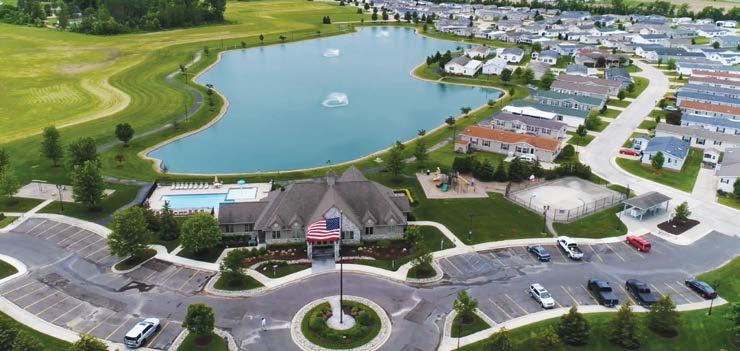
Christopher Nortley President | CEO
(586) 884-8416 chris@mhreinc.com
Colleen Lannoo Broker Associate | Director of Data Research
(586) 580-7322 colleen@mhreinc.com
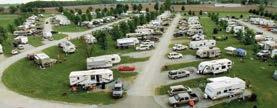
Melissa Wade Senior Transaction Manger
(586) 884-8415 melissa@mhreinc.com
Richard Zicker Senior Advisor
(407) 640-7044 richard@mhreinc.com
Michel Mikkola Senior Advisor
(407) 640-7046 michel@mhreinc.com
Melanie Ng Senior Analyst | Sales Associate
melanie@mhreinc.com









